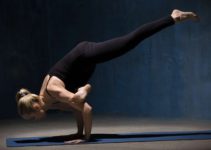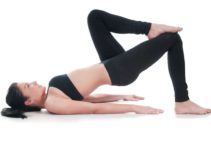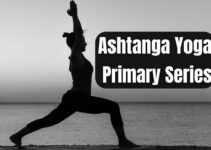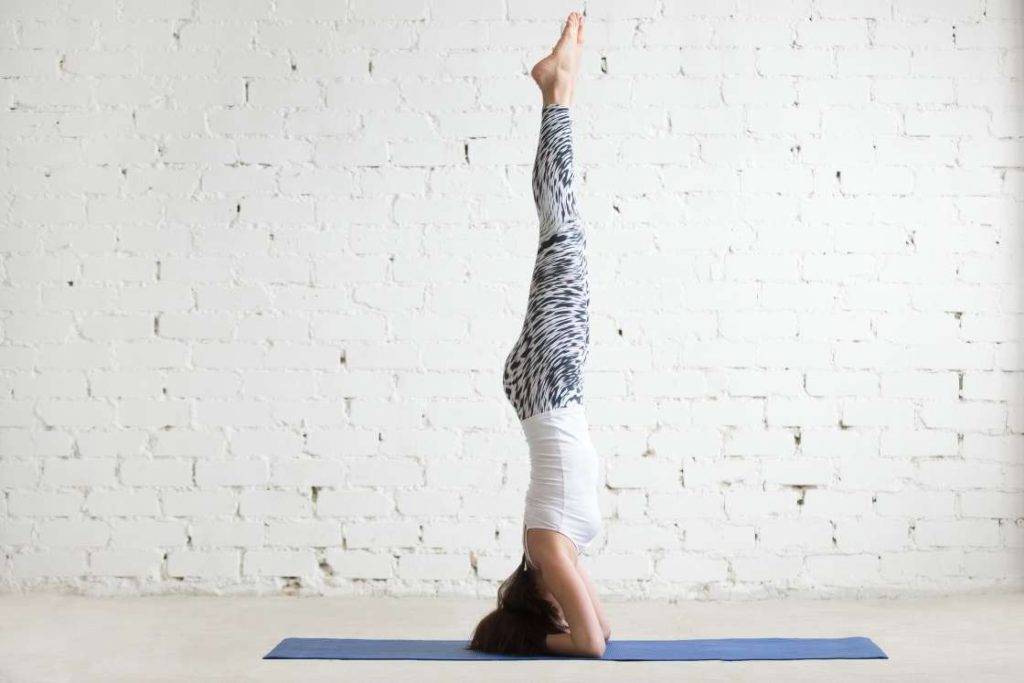
Isn’t it great if you can turn your getting stuck situation upside-down to have a revolved perspective? Similar are the effects of the headstand which is an advanced yoga inversion pose.
The restorative benefits of the headstand to the nervous system makes it the most valuable practice in yoga. Yogis often refer to it as the King of all asanas because it boosts the brain’s capacity, i.e. as effective to a body as a king to its empire.
Headstand is a challenging hatha yoga asana where the body is inverted and balanced on the head and forearms. Here, the head lies below the heart, i.e. opposite of the usual body posture or any standing asana like tadasana.
Besides balance, strength, and alignment, pleasure is an indispensable element to perform Headstand providing soothing effects. Go on further to find out its benefits, variations, and practice tips.
Meaning
In Sanskrit, Headstand is known as Sirsasana composed of the following root terms:
- “Sirsa” means “head”
- “Asana” refers to “posture”
It is assumed by standing on the crown of the head while legs are lifted against the gravity, hence the name.
The inversion of the body to hold sirsasana inverts and modifies the flow and pressure of the blood. In response to a change in the blood circulation, the body reacts by bringing balance in different body systems.
Headstand is all about bringing relaxation, gentleness, and playfulness. Thus, the headstand pose provides grounding effects and improves the physiology of the practitioner.
Headstand Practice Guide
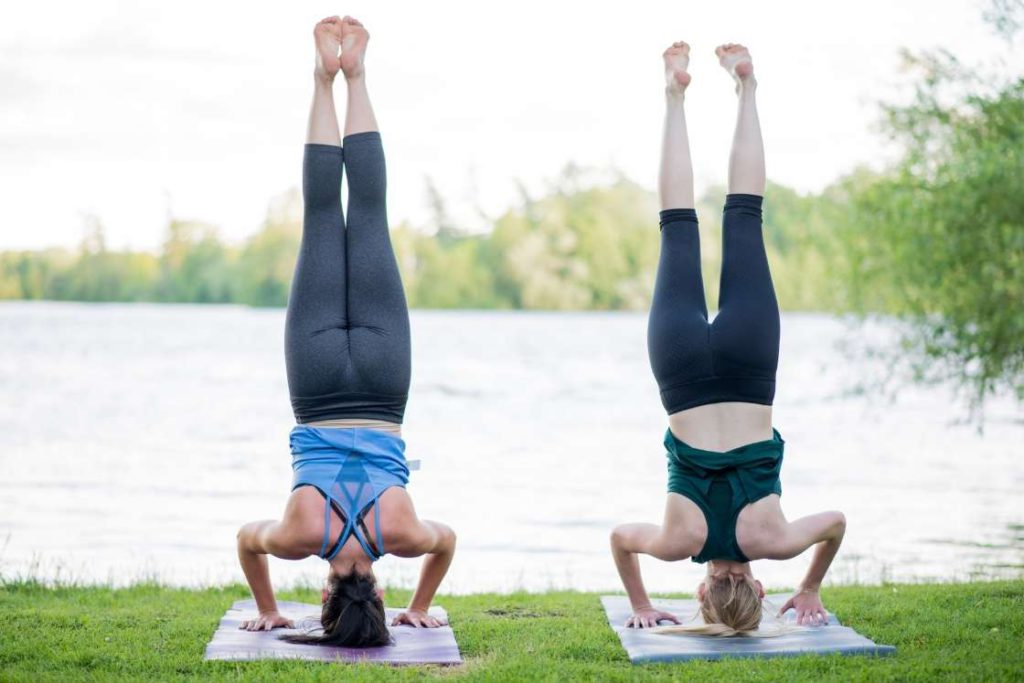
Contraindications
- Avoid attempting Headstand pose in case of back or neck injury.
- Do not practice it if you are suffering from blood pressure.
- Women must avoid this pose during pregnancy and menstruation.
- Cardiac patients must avoid this pose.
- People with osteoporosis must avoid this pose.
- Patients with glaucoma or other eye concerns should skip this practice.
Preparatory Poses
- Standing Cow Face Pose (Tadasana Gomukhasana)
- Torso Stretch Pose (Bharadvajasana)
- Downward Facing Dog Pose (Adho Mukha Svanasana)
- Intense Leg Stretch Pose (Prasarita Padottanasana)
- Dolphin Pose (Ardha Pincha Mayurasana)
- Supported Shoulderstand (Salamba Sarvangasana)
How to Do Headstand(Sirsasana)
- Begin with sitting in Vajrasana and overlap your arms by placing the hands on the alternate upper arms.
- Lean forward to take your elbows to the ground in the same position.
- Release your hands from the upper arms and bring them closer.
- Clasp the fingers so that the forearms are placed on the floor forming a triangle.
- Place the crown of your head on the cupped hands.
- Lift your hips, curl your toes, and straighten your knees.
- Walk your feet towards your head until the hips lie above the shoulders.
- Bring your right knee into your chest followed by the left.
- Squeeze your knees together with the feet lifted off the floor.
- Hold this pose for a few seconds taking relaxed breaths.
- Inhale, raise your legs to the sky lengthening the tail bone.
- Focus your gaze on a fixed point at your eye level and take deep-relaxed breaths.
- Stay in the inverted pose as long as comfortable.
- Release by bending the knees towards the hips one at a time pressing the navel to the spine.
- Press the knees against the chest and hold the pose for a while.
- Gently bring your toes to the floor, take a breathe in, and walk the toes out.
- Exhale lowering the knees to the floor and release onto the tops of your feet as in a child’s pose.
- Release your hands and slowly straighten your spine by lifting the tucked chin at last.
Follow-up poses
Relax your body and give it time to regain the normal blood flow. You can lean slightly backward opening the chest and bringing the palms on the back of the mat with fingers pointing forward.
Then relax in Child’s pose followed by corpse pose (shavasana).
Precautions
There are many health risks associated with the headstand performed incorrectly. Therefore keep the following points in mind before and while getting into it:
- Draw your shoulders away from the ears to avoid compressing the head and neck.
- To avoid the fall, ensure the hips do not move behind your shoulders.
- Keep the core engaged throughout the practice and do not get out the natural curve of the spine.
- If you are practicing it against a wall, do not lean on it. Maintain a distance of 2-3 inches between the wall and placing the hands on the floor for the foundation.
- Take your time to find the right spot on the head before placing it on the floor.
- Do not widen the elbows more than the shoulders width.
Beginner’s Tips
- While clasping the hands on the floor keep the tips of the little fingers joined. This will form a stable base for the head.
- Form a cushiony background around you using folded blankets or cushions so that in case you fall you won’t get hurt.
- Curl your index, middle, and ring fingers towards the palm keeping the thumb and little fingers extended in opposite directions. Place the thumb between the eyebrows and extend your little finger to the head. The point where it touches on the head is the correct landing spot.
- In the beginning, it is normal to practice near a wall to overcome the fear of falling but gradually increase the distance between the wall and you.
Variations
1. Supported headstand Pose (Salamba Sirsasana)
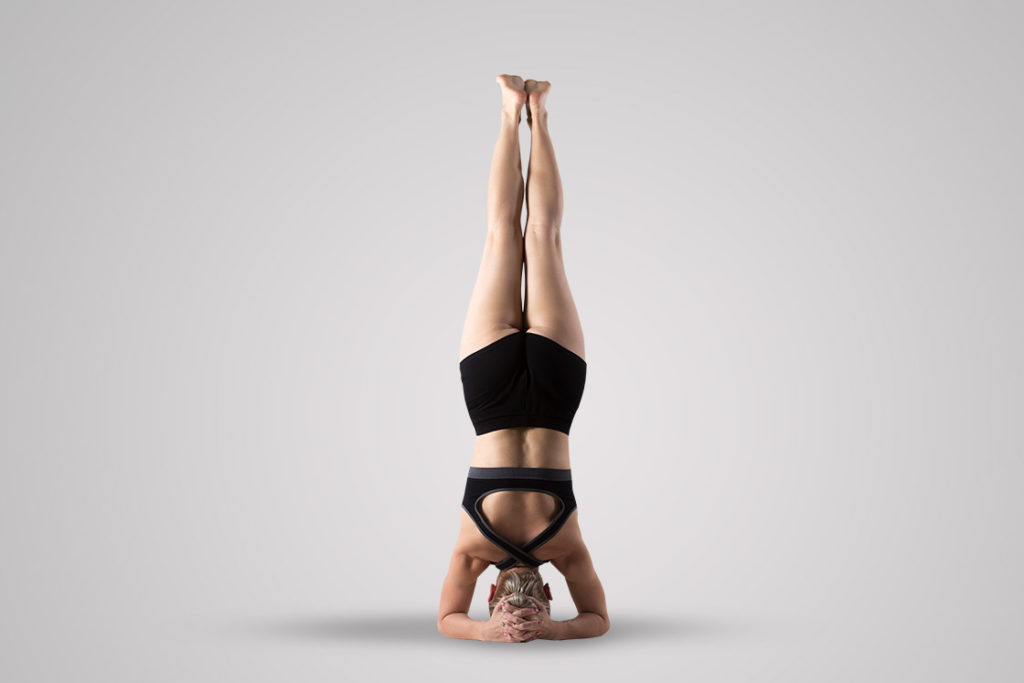
In this variation the head is not cupped on the inside of the hands.
- Begin in the cat pose followed by placing the head between the hands.
- Draw the hands back towards the knees followed by lifting the knees off the floor.
- The hands are placed on the floor to balance in inversion and the elbows are kept bent.
- From here, walking the toes upward and further steps remain the same as the original pose.
2. Unsupported headstand pose (Niralamba Sirshasana)
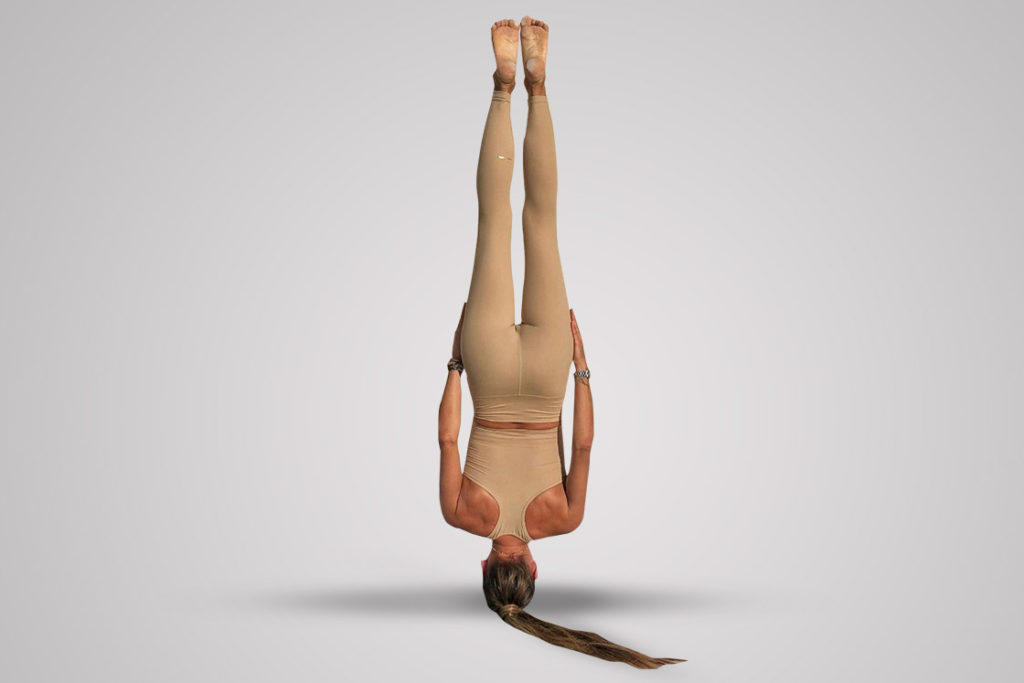
In this variation, the entire body weight is balanced by the head without the support of the arms, hence the name.
- For this, start with marjariasana and then spread the arms straight towards the knees with palms facing up.
- Lift the knees and walk the toes towards the chest followed by lifting the legs pressing the wrists against the floor.
3. Bound hands headstand pose
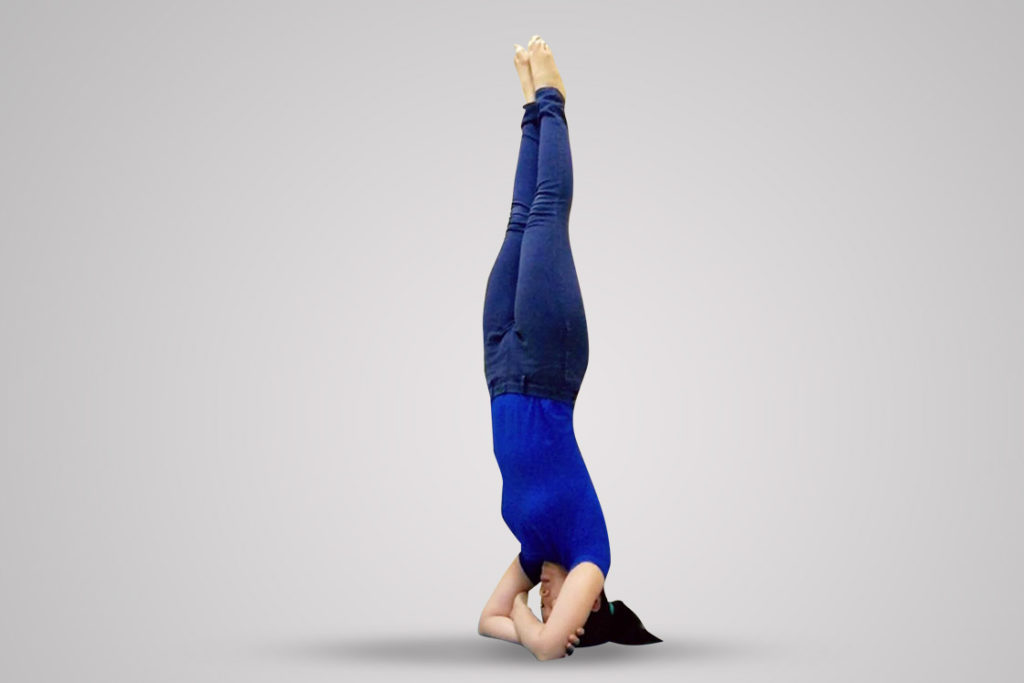
- Here, the arms are folded in front of the chest grabbing the upper arms with alternate hands.
- Bring the folded arms and elbows to a folded blanket on the ground.
- Place the crown of the head on the floor beyond the arms so that forehead lies just behind the forearms.
- Raise the knees and straighten the legs and whenever ready pressing the forearms to the floor lift the legs to come into inversion.
4. Side headstand pose
- This pose can be assumed in continuation with the original headstand once the latter is successfully achieved.
- After attaining the headstand pose, turning the trunk and legs to either side balancing sideways.
- The head and hand position remains intact.
5. Revolved one-legged headstand pose
- After getting into the headstand, split your legs by moving the right leg forward and the left leg backward.
- Now, twist the trunk rotating the legs so that it seems twisting towards the left side.
- Repeat these steps switching the legs and side of twisting.
- The head, neck, and hands remain undisturbed.
6. Headstand pose lotus leg
- Once the balance has been established in the headstand.
- Gradually, fold the legs into padmasana.
- Hold this final pose with folded legs balancing in the inversion.
7. One-legged headstand
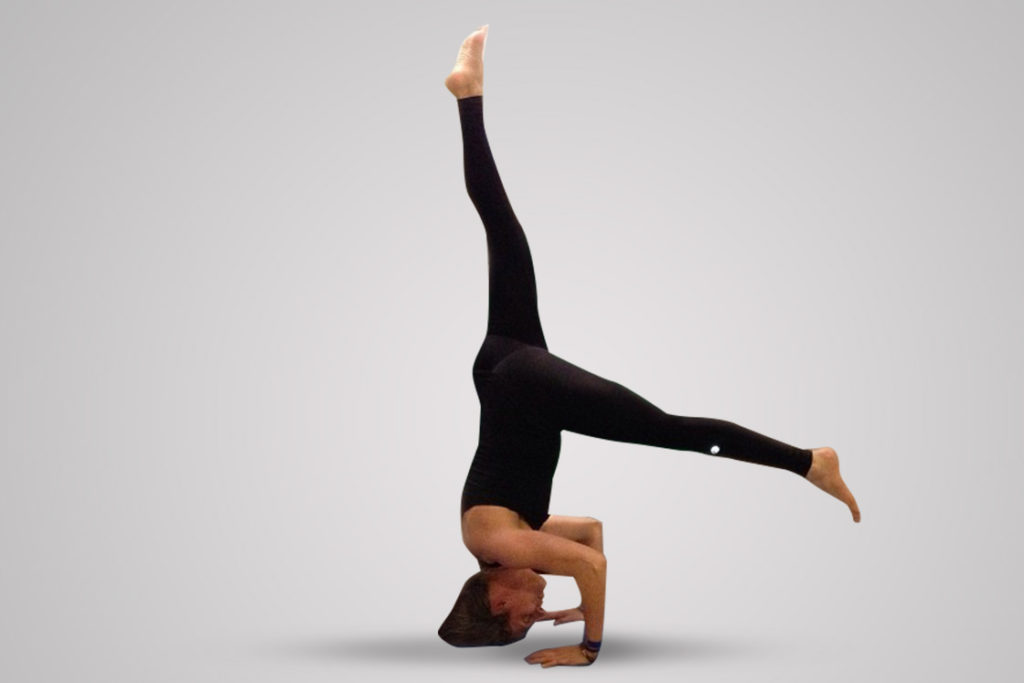
- Practice headstand with balance then gradually lower the right leg to the floor.
- The toes of the right leg touch the floor while the left leg remains lifted vertically.
- This is followed by switching the legs.
8. Sideways-one legged headstand
- This is a more difficult version as after the headstand one leg is lowered to the floor sideways.
- The lower leg is kept in line with the head on the floor, while, the other leg remains lifted.
9. Half headstand pose
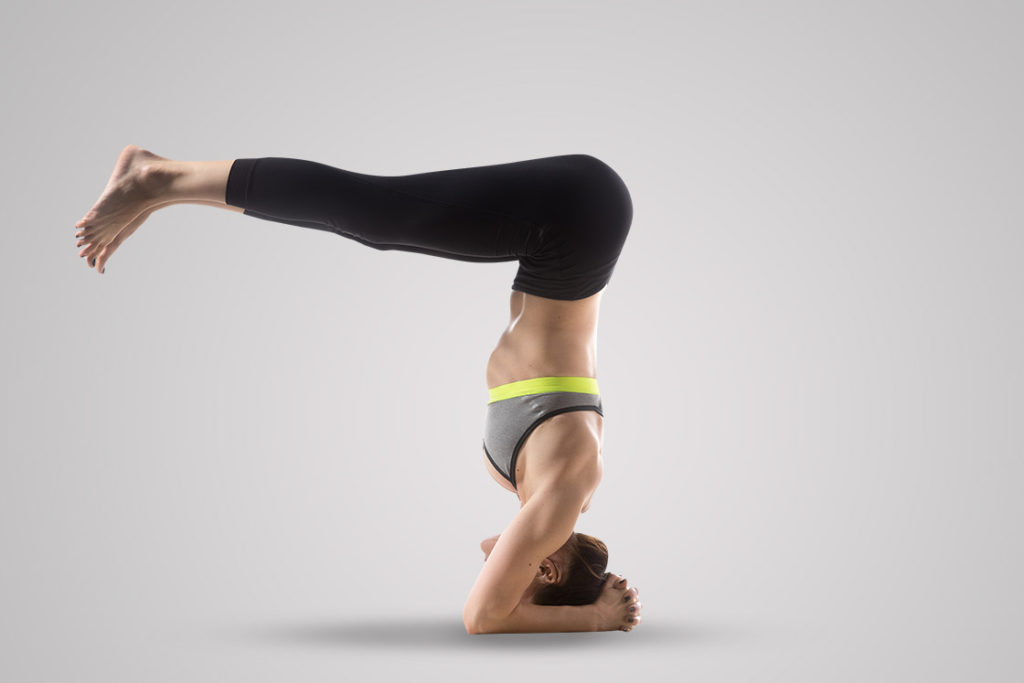
- It is assumed by coming to all-fours and placing the crown on the floor between hands.
- This is followed by lifting the knees and hips.
- Shift the weight on the head and feet.
- Gradually take the arms behind the back clasping the hands.
- Finally, raise the hips as high as possible tipping the toes on the floor.
Therapeutic Benefits
- Headstand pose and its variations are beneficial in the prevention of asthma.
- It is therapeutic in curing diabetes [efn_note] Therapeutic Role of Yoga in Type 2 Diabetes https://www.ncbi.nlm.nih.gov/pmc/articles/PMC6145966/ [/efn_note].
- The pose can be practiced to relieve headaches and migraines.
- Any disorder of the reproductive system can be healed with the headstand practice.
- Headstand is also beneficial to eliminate menopausal imbalances and symptoms.
- It relaxes the nervous system thus cures stress and anxiety.
- It also comes in handy in case of any glandular or hormonal issues.
Headstand Benefits
1. Improves blood circulation
The inversion in the body supplies the blood towards the head and changes the flow and pressure. It improves the heart functioning with the head and eyes receiving enough blood supply.
2. Strengthen the spine
Headstand pose improves the posture of the spine and strengthens the back muscles. It improves spinal flexibility and realigns the vertebral column.
3. Build core strength
This yogic posture uses the core muscles to uplift the legs against gravity and these muscles remain engaged throughout the practice. This helps in strengthening the core and enhancing endurance.
4. Stimulates endocrine gland
While performing the headstand the pituitary gland (master gland) is activated. Hence all the other glands are also stimulated maintaining the hormonal flow within the body.
5. Enhances lungs efficiency
Due to the inverted position of the body, the abdominal organs pressurize the diaphragm. It increases the exhalation rate thus removing carbon dioxide and purifying the lungs. The removal of toxins from the lungs makes them efficient.
Conclusion
Headstand is a challenging pose but life is all about overcoming your fears and facing them head-on.
Trying this posture will serve as a perfect beginning to conquer the obstacles. Besides this, it works on improving all four cardiovascular, lymphatic, nervous, and endocrine systems. [efn_note] A REVIEW STUDY ON EFFECTS OF YOGA INVERSIONS WITH SPECIAL REFERENCE TO SIRSHASANA http://www.ijcrt.org/papers/IJCRT1807265.pdf [/efn_note]
If you are a beginner try the basic headstand pose today with proper safety and maintaining fun. Even the experienced practitioner can use the above practice guide to try the variations and get immense health benefits.
